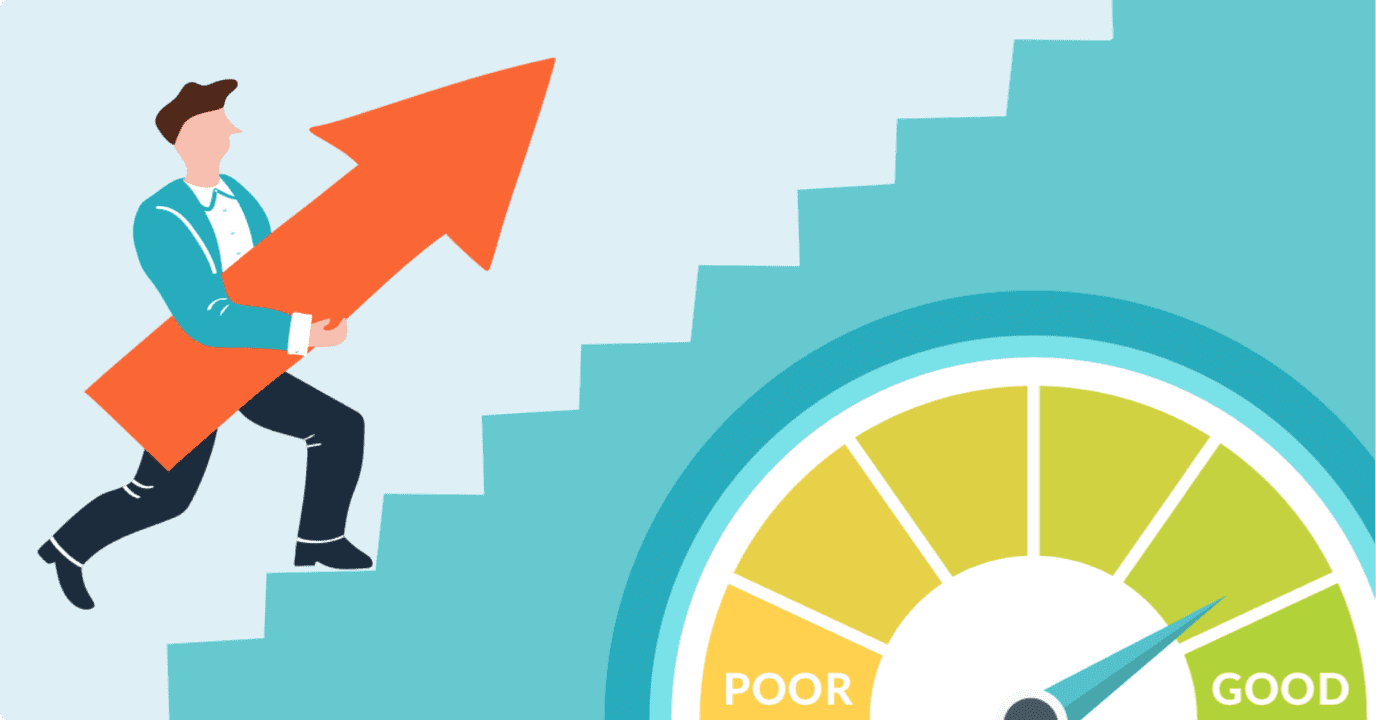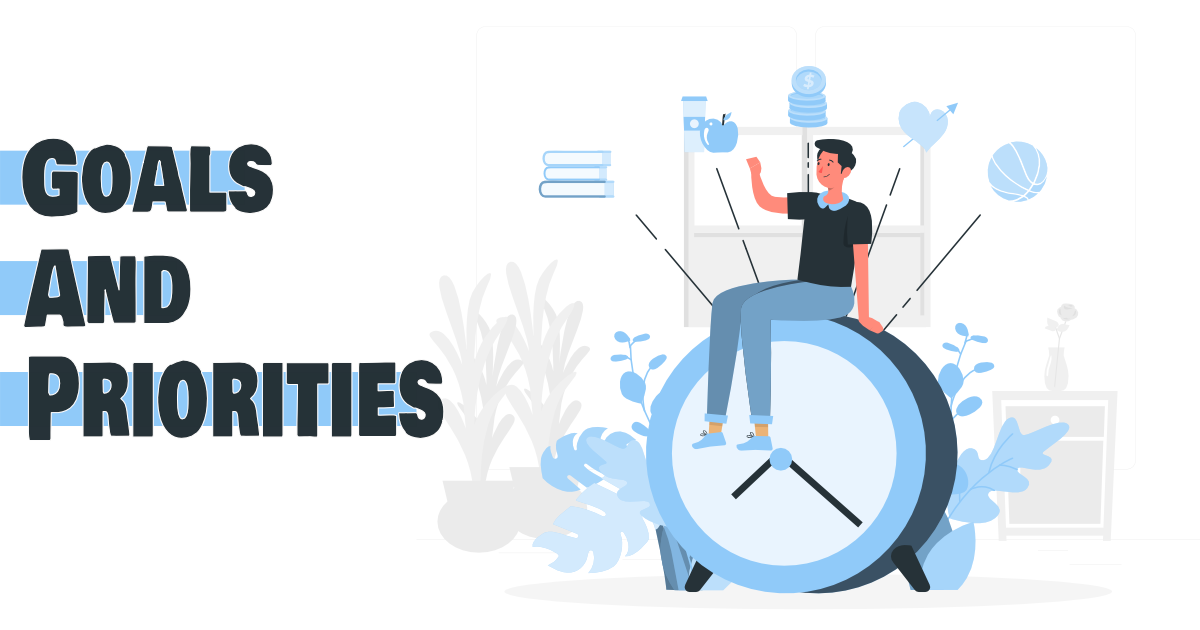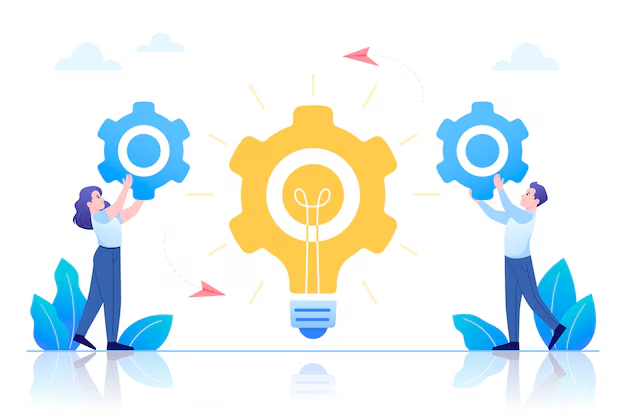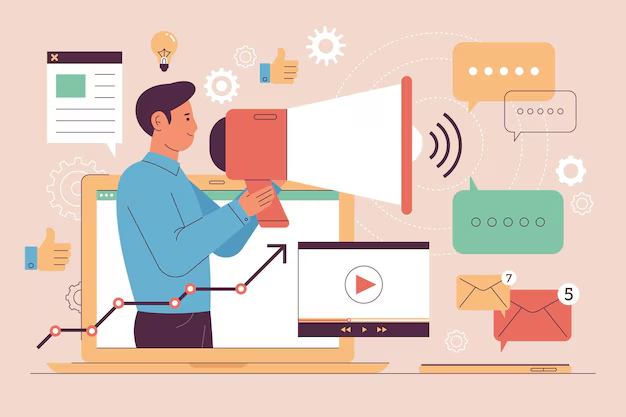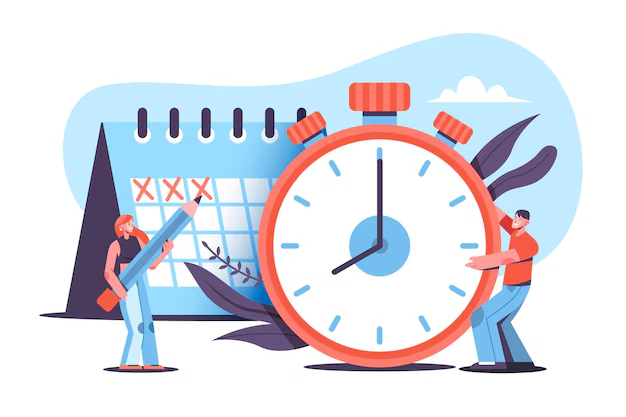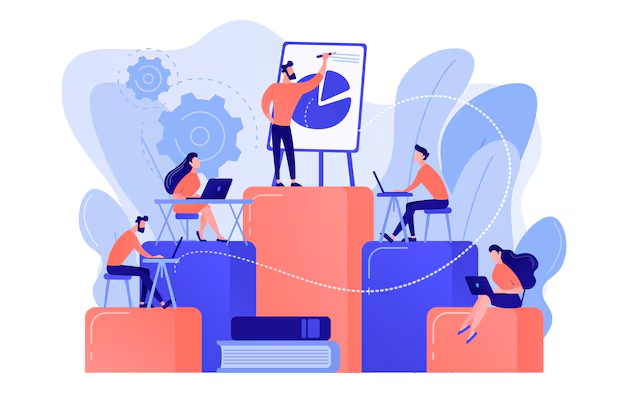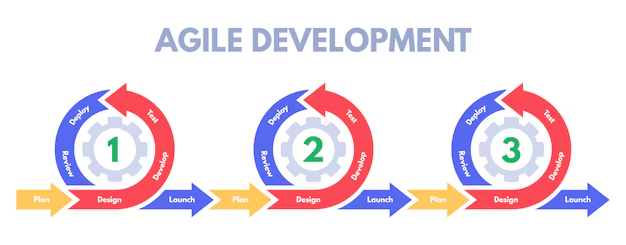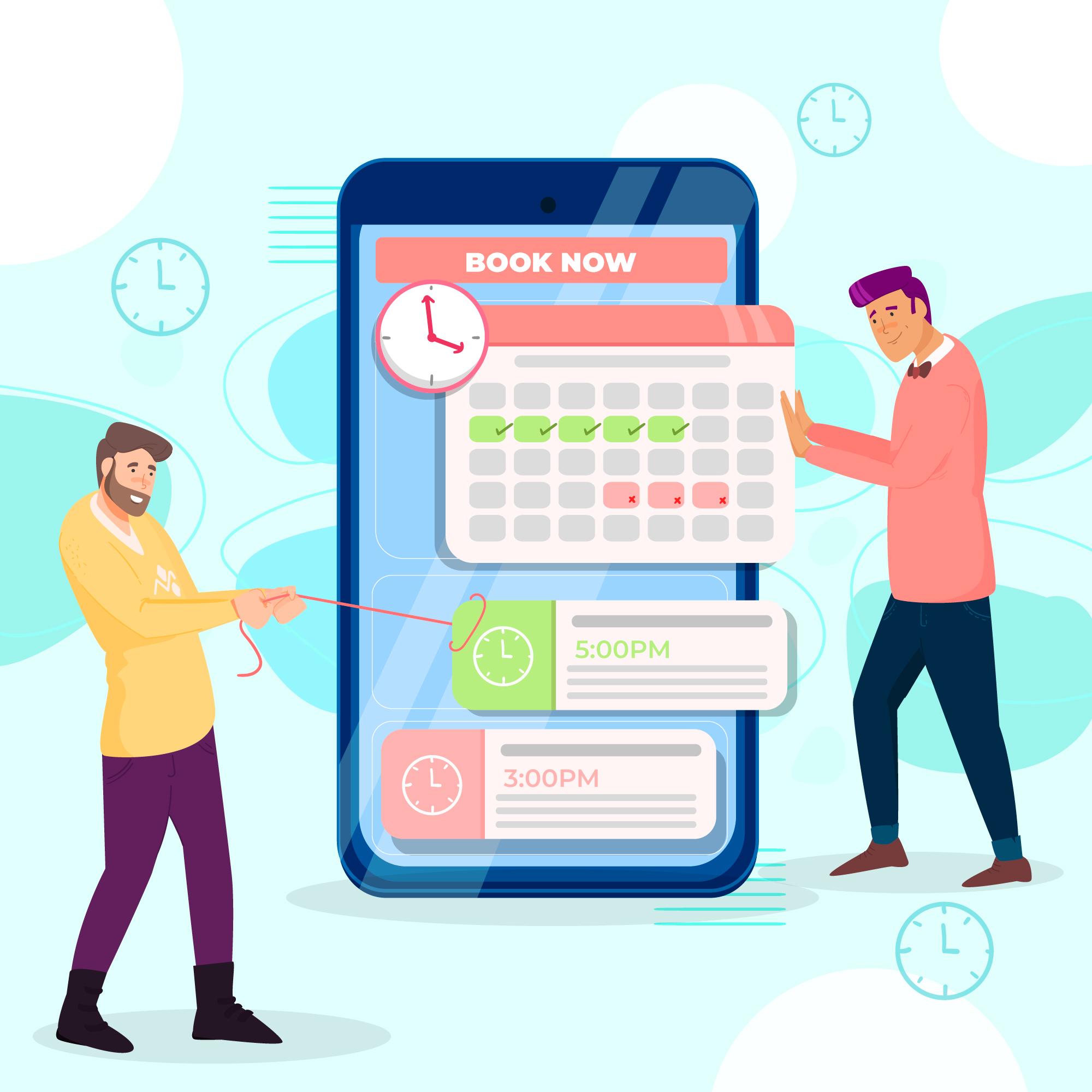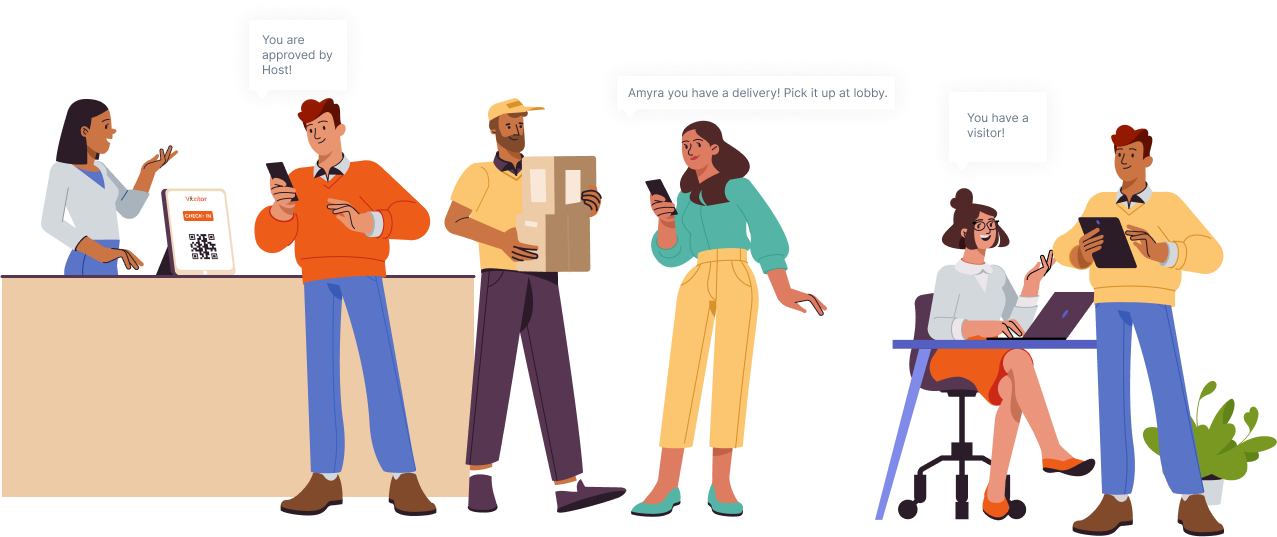Table of Content
Try Vizitor for Free!

Thu, May 23, 2024
Read in 11 minutes
Struggling with workplace productivity?
Studies show that efficient companies are 40% more profitable, and inefficient work processes cost businesses up to 30% of their revenue each year. Whether you’re managing remote teams or running an office workforce, finding ways to improve work efficiency can cut costs, reduce wasted time, and boost employee performance.
Efficiency encompasses various aspects, from streamlining processes and optimizing resources to embracing technology solutions that automate repetitive tasks. When organizations prioritize efficiency, they not only save time and resources but also empower their teams to work smarter, leading to higher job satisfaction and morale.
In this guide, we’ll share 10 proven ways to increase efficiency in the workplace, from streamlining processes to using productivity tools.
Improving Efficiency in the Workplace: Top 10 Ways
1. Streamline Processes
Efficient workflow management is the backbone of productivity in any organization. By identifying and eliminating bottlenecks, implementing lean methodologies, and automating repetitive tasks, businesses can streamline processes and achieve optimal efficiency.
• Identify and Eliminate Bottlenecks: Bottlenecks in business are points in a workflow where the flow of work is hindered or slowed down, leading to delays and inefficiencies. It’s crucial to identify these bottlenecks through careful analysis of workflow patterns, employee feedback, and performance metrics. Once identified, strategies can be devised to eliminate or mitigate these bottlenecks. This may involve restructuring processes, reallocating resources, or investing in technology solutions that streamline workflows.
• Implement Lean Methodologies: Lean methodologies focus on maximizing value while minimizing waste in processes. This approach involves identifying non-value-added activities and eliminating or optimizing them to improve overall efficiency. By embracing lean principles such as continuous improvement, standardized processes, and waste reduction, organizations can achieve streamlined workflows and enhanced productivity.
• Automate Repetitive Tasks: Automation plays a pivotal role in reducing manual effort and increasing efficiency. By automating repetitive and time-consuming tasks such as data entry, report generation, and email notifications, employees can focus on more strategic and value-added activities. This not only saves time but also reduces errors and improves accuracy in tasks, leading to overall process optimization.
2. Set Clear Goals and Priorities
Clear and well-defined goals are essential for guiding teams and individuals towards success when it comes to improving efficiency in the workplace. By establishing specific, measurable, achievable, relevant, and time-bound (SMART) goals, organizations can align efforts with overarching objectives and drive performance.
• Define Specific, Measurable, and Achievable Goals: Goals should be specific and clearly defined, allowing employees to understand what is expected of them. They should also be measurable, with defined metrics or Key Performance Indicators (KPIs) to track progress and evaluate success. Additionally, goals should be achievable and realistic, considering available resources and capabilities.
• Align Goals with Organizational Objectives: It’s crucial to align individual and team goals with the organization’s overall objectives and strategic initiatives. This ensures that efforts are directed towards common goals that contribute to the company’s success. Regularly communicating these goals and their significance fosters clarity and motivation among employees.
• Prioritize Tasks Based on Importance and Deadlines: Prioritization is key to effective goal achievement when it comes to improving efficiency in the workplace. By categorizing tasks based on their importance, urgency, and impact on goals, teams can focus on high-priority activities that drive results. Utilizing prioritization techniques such as the Eisenhower Matrix or ABC analysis helps in allocating time and resources efficiently.
3. Embrace Technology Solutions
Technology plays a pivotal role in optimizing operations, enhancing collaboration, and automating routine tasks. By investing in tools and software tailored to organizational needs, businesses can unlock new levels of efficiency and productivity.
• Streamline Operations with Project Management Platforms: Project management platforms streamline project workflows, facilitate task assignment and tracking, and improve collaboration among team members. Features such as Gantt charts, task dependencies, and real-time communication tools enhance project visibility and coordination.
• Enhance Collaboration with CRM Systems: Customer Relationship Management (CRM) systems centralize customer data, streamline sales processes, and improve customer interactions. By leveraging CRM functionalities such as lead management, sales pipeline tracking, and customer analytics, businesses can enhance collaboration across sales, marketing, and customer service teams.
• Automate Routine Tasks with Communication Tools: Communication tools such as email automation software, instant messaging platforms, and video conferencing solutions streamline communication and collaboration. Automated email workflows, chat channels for team discussions, and virtual meeting capabilities facilitate seamless information sharing and decision-making.
Top Tools to Improve Workplace Efficiency in 2025
Embracing technology is one of the most effective ways to improve work efficiency and boost team productivity.
Here are some of the best workplace efficiency tools that businesses are using in 2025:
| Category | Recommended Tools | Key Features |
|---|---|---|
| Task & Project Management | Asana, Trello, Monday.com | Task assignment, deadlines, visual dashboards |
| Team Collaboration | Slack, Microsoft Teams | Real-time chat, file sharing, group channels |
| Time Tracking | Clockify, Toggl | Time logs, productivity reports |
| Automation & Workflow | Zapier, IFTTT | Automate repetitive tasks, connect apps |
| Attendance Management | Vizitor, ClockIt | Employee time tracking, visitor check-ins, data analytics |
4. Optimize Communication
Effective communication is fundamental to organizational success. By fostering open and transparent communication channels, encouraging feedback, and ensuring alignment across teams and departments, businesses can minimize misunderstandings and delays, leading to improved productivity.
• Foster Open and Transparent Communication Channels: Creating a culture of open communication where employees feel comfortable sharing ideas, concerns, and feedback fosters collaboration and innovation. Utilizing communication channels such as team meetings, town halls, and feedback surveys promotes transparency and builds trust within the organization.
• Encourage Feedback and Clarify Expectations: Regular feedback loops between managers and employees enable continuous improvement and performance development. Encouraging constructive feedback, setting clear expectations, and providing regular updates on goals and projects ensure clarity and alignment among team members.
• Ensure Everyone is on the Same Page: Miscommunication can lead to inefficiencies and misunderstandings. It’s essential to ensure that everyone is on the same page regarding goals, priorities, and expectations. Clear communication of roles, responsibilities, and project timelines helps avoid confusion and enhances collaboration.
Common Challenges That Reduce Workplace Efficiency (and How to Overcome Them)
Even with the best tools and strategies, workplace inefficiencies can persist if certain underlying issues are not addressed.
Here are some common challenges businesses face when trying to improve efficiency at work—and practical solutions to overcome them:
| Challenge | How It Affects Efficiency | Solution |
|---|---|---|
| Poor Task Prioritization | Employees waste time on low-impact tasks, delaying critical work. | Use the Eisenhower Matrix to separate urgent vs. important tasks and focus on high-priority work first. |
| Excessive Meetings | Too many meetings eat into productive hours, leaving little time for actual work. | Adopt a “No-Meeting Day” policy or reduce meeting durations to 15-30 minutes. Use tools like Slack for quick team updates instead. |
| Lack of Clear Communication | Misunderstandings lead to rework and missed deadlines. | Use project management tools like Trello or Asana to assign tasks clearly and track progress visibly. Encourage daily team check-ins. |
| Resistance to Technology Adoption | Employees stick to outdated processes, slowing down operations. | Introduce new tools gradually and offer training sessions to help teams adapt to productivity software and automation tools. |
| Employee Burnout & Overload | Overworked teams experience mental fatigue, leading to errors and decreased output. | Encourage time management practices like time blocking and regular breaks. Promote work-life balance. |
5. Promote Time Management
Effective time management practices empower employees to optimize their productivity and focus on tasks that drive results. By promoting time management techniques such as setting deadlines, minimizing distractions, prioritizing tasks, and utilizing time management tools, organizations can work on improving efficiency in the workplace.
• Set Deadlines and Milestones: Clear deadlines and milestones provide a sense of urgency and direction, helping employees prioritize tasks and manage their time effectively. Utilizing project management tools with built-in deadline-tracking and milestone-setting capabilities facilitates task management and progress monitoring.
• Minimize Distractions and Time Wasters: Identifying and minimizing distractions in the workplace, such as unnecessary meetings, excessive emails, and multitasking, allows employees to stay focused and productive. Encouraging time-blocking techniques, establishing designated focus periods, and creating a conducive work environment promote productivity.
• Prioritize Tasks Based on Importance and Urgency: Not all tasks are equal in terms of impact and urgency. Implementing prioritization techniques such as the Eisenhower Matrix or Covey’s Time Management Matrix helps in categorizing tasks based on their importance and urgency, guiding employees in allocating their time and effort efficiently.
• Utilize Time-Tracking Tools: Time-tracking tools and apps help employees monitor their work hours, track task completion times, and identify time sinks. Analyzing time-tracking data provides insights into productivity patterns, identifies areas for improvement, and facilitates better time management practices.
Top 3 Time Management Techniques to Boost Workplace Efficiency
- Pomodoro Technique: Work for 25 minutes, then take a 5-minute break.
- Time Blocking: Schedule tasks into time slots to avoid distractions.
- Eat the Frog: Start your day by tackling the hardest task first.
6. Provide Training and Development
Continuous learning and development opportunities are essential for enhancing employee skills, knowledge, and efficiency. By investing in training sessions, workshops, mentorship programs, and skill-building initiatives, organizations empower their teams to excel and contribute effectively to business objectives.
• Invest in Continuous Learning Opportunities: Offering a range of learning opportunities, including workshops, seminars, webinars, and online courses, encourages employees to expand their knowledge and skills. Tailoring training programs to individual and team needs ensures relevance and applicability to job roles.
• Provide Access to Skill-Building Resources: Access to skill-building resources such as learning platforms, educational materials, and certifications equips employees with the tools they need to succeed. Supporting ongoing skill development through resources that align with business goals enhances employee capabilities and job performance.
• Offer Mentorship and Coaching Programs: Mentorship and coaching programs pair employees with experienced mentors or coaches who provide guidance, feedback, and support. These programs foster professional growth, build confidence, and accelerate skill development, leading to increased efficiency and effectiveness.
• Encourage Knowledge Sharing and Collaboration: Creating opportunities for knowledge sharing and collaboration among employees promotes a culture of continuous learning. Peer-to-peer learning, cross-functional projects, and knowledge-sharing platforms facilitate the exchange of ideas, best practices, and innovative solutions.
6. Implement Agile Methodologies
Cross-Functional Teams: Form cross-functional teams comprising members with diverse skills and expertise relevant to the project or task. This approach promotes collaboration, knowledge sharing, and collective problem-solving, leading to more efficient and effective outcomes.
• Iterative Development: Adopt iterative development cycles, such as sprints in Scrum or continuous delivery in Kanban, to break projects into manageable increments. This allows for frequent feedback, incremental improvements, and early delivery of valuable features or products, reducing time-to-market and enhancing customer satisfaction.
• Prioritized Backlog: Maintain a prioritized backlog of tasks or user stories based on business value, customer needs, and project goals. Regularly review and reprioritize the backlog to ensure that the team is focused on delivering high-priority items that align with strategic objectives.
• Daily Stand-up Meetings: Conduct daily stand-up meetings, also known as daily scrums, where team members briefly discuss progress, challenges, and planned tasks. These short, focused meetings improve communication, foster transparency, and facilitate quick decision-making, keeping the team aligned and productive.
• Continuous Feedback: Encourage continuous feedback loops among team members, stakeholders, and customers throughout the project lifecycle. Solicit feedback on completed work, gather insights for improvement, and adapt plans and priorities based on feedback to optimize outcomes and meet evolving requirements.
• Visual Management: Utilize visual management tools such as Kanban boards, task boards, and burndown charts to visualize work progress, track tasks, and identify bottlenecks or blockers. Visualizing work enhances transparency, promotes accountability, and enables proactive problem-solving and resource allocation.
5 Key Steps to Improve Efficiency at Work
Looking for a quick recap? Here are the top 5 ways to improve workplace efficiency:
- Streamline processes by automating repetitive tasks.
- Set SMART goals and prioritize tasks based on importance.
- Use workplace efficiency tools like Asana, Slack, and Vizitor.
- Master time management techniques like Pomodoro and Time Blocking.
- Foster a culture of clear communication and regular feedback.
Tip: Combining the right tools with time management strategies is the key to achieving long-term workplace efficiency.
Wrapping It Up
Vizitor stands as a beacon of modern efficiency, transforming the traditional workplace experience into a streamlined, secure, and seamless environment. Through its innovative Visitor Management System, and ideas to improve workplace efficiency, Vizitor not only enhances security protocols but also revolutionizes the way businesses operate.
By automating visitor check-ins, streamlining data management, and providing real-time analytics, Vizitor empowers organizations to focus on their core activities with renewed vigor. This not only saves valuable time and resources but also fosters a culture of productivity and professionalism. In essence, Vizitor Company is not just a solution; it’s a catalyst for workplace excellence in the digital age.
Start transforming your workplace today – Try Vizitor for Free!
Frequently Asked Questions
1. How can I improve employee efficiency at work?
- Set clear goals, automate routine processes, and use productivity tools like project management platforms.
- Regular check-ins and feedback sessions also help employees stay aligned and motivated.
2. What are the best tools to improve work efficiency?
- Task & Project Management: Asana, Trello, Monday.com
- Time Tracking: Clockify, Toggl
- Collaboration: Slack, Microsoft Teams
- Attendance & Check-Ins: Vizitor, ClockIt
3. How do you measure efficiency in the workplace?
- Track employee output vs. time spent using time-tracking tools.
- Evaluate project completion rates and compare them with deadlines.






